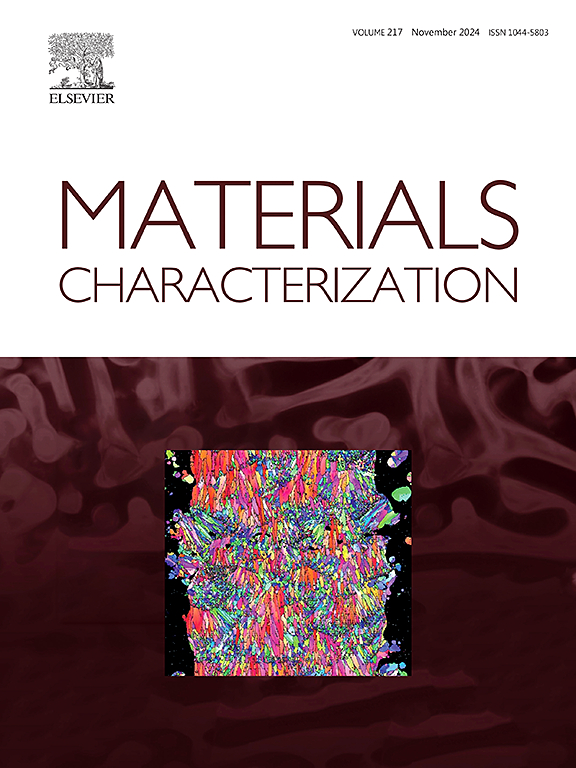In-situ characterization of microstructure evolution mechanism of TiB reinforced titanium matrix composites at different cooling rates
IF 4.8
2区 材料科学
Q1 MATERIALS SCIENCE, CHARACTERIZATION & TESTING
引用次数: 0
Abstract
In order to study the microstructure evolution of titanium matrix composites at different cooling rates, titanium matrix composites with a nominal composition of 3 vol% TiB/Ti-6Al-4Sn-10Zr-1Mo-1Nb-1W-0.35Si were prepared. The microstructure evolution behavior was characterized in situ by back scattered electron microscope, electron back scattering diffraction and laser confocal microscope. The results indicate that the α phases initially nucleate heterogeneously on the TiB phase, and end the growth in the length direction due to the hindrance of the original β grain boundaries, TiB phases and the coexisting α phases. The size of α phase gradually decreases as the cooling rate increases due to enhanced phase-to-phase hindrance and shorter growth times. At a cooling rate of 25 °C/s, the high undercooling formed by the high cooling rate provides the driving energy for the nucleation of the α and α’ phases. The average length of the α and α’ phases is about 13 μm, and the aspect ratio is about 14. And the compressive yield strength of the composites increased by 12.3 % and the compressive strength by 9.9 % due to fine grain strengthening and precipitation of α’ phase.
求助全文
约1分钟内获得全文
求助全文
来源期刊

Materials Characterization
工程技术-材料科学:表征与测试
CiteScore
7.60
自引率
8.50%
发文量
746
审稿时长
36 days
期刊介绍:
Materials Characterization features original articles and state-of-the-art reviews on theoretical and practical aspects of the structure and behaviour of materials.
The Journal focuses on all characterization techniques, including all forms of microscopy (light, electron, acoustic, etc.,) and analysis (especially microanalysis and surface analytical techniques). Developments in both this wide range of techniques and their application to the quantification of the microstructure of materials are essential facets of the Journal.
The Journal provides the Materials Scientist/Engineer with up-to-date information on many types of materials with an underlying theme of explaining the behavior of materials using novel approaches. Materials covered by the journal include:
Metals & Alloys
Ceramics
Nanomaterials
Biomedical materials
Optical materials
Composites
Natural Materials.
 求助内容:
求助内容: 应助结果提醒方式:
应助结果提醒方式:


